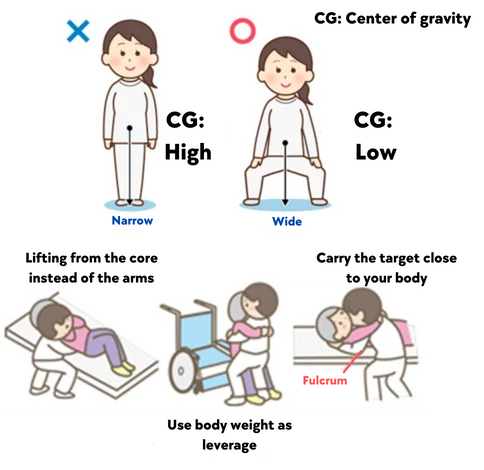Body mechanics is a technique that is used in the nursing care field to lift heavy loads. This is a technique that allows the caregiver to exert maximum force with minimum energy to avoid back pain when moving a person in a chair to a bed, etc.
This technique can also be used in everyday life to minimize the burden on the body by successfully using bones, joints, and muscles movements.
There are eight principles of body mechanics:
The eight principles
- Stay near to the center of gravity
- Keep the subject close to your body
- Maintain a broad base of support with feet apart
- Keep the center of gravity low
- Do not twist the body
- Use the strongest muscles, like arms and thighs
- Keep your back level, bend at the hips
- Use the leverage principle, using body weight to help
Key points
Open both legs wide to keep the center of gravity low.
Bring the object to be lifted close to the center of the body (towards the navel).
Use your torso, not your arms, to move (lift).
Do not bend at the waist.
Of the eight principles, the four mentioned in the key points are techniques that are very useful in everyday life.
They are especially useful when moving luggage, carrying a baby or child, or caring for a family member.
However useful they may be when carrying heavy objects, there is a limit to how much you can carry. Ideally, you should have some assistance if you’re carrying an object above a fourth of your weight.
Ankle and back pain can often be caused by unintentional actions. Please be conscious of this for your own body to reduce your daily load.
ILC International Lumbago Clinic Tokyo
Written by Naoki Yoshida, Administrative Director




